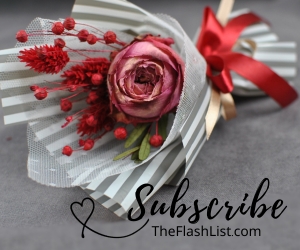
Wigs have evolved far beyond mere convenience, emerging as bold fashion statements and essential tools for those navigating hair loss. Among the vast selection available, human hair wigs remain the gold standard thanks to their realistic texture, customizable styles, and natural movement. Still, even the most luxurious wig will fall flat without the right attachment method. Whether for aesthetics or practicality, achieving a seamless, lasting fit hinges on how the wig is secured. The ongoing debate between wig glue and wig tape reflects a wider conversation about personal preference, lifestyle demands, and individual comfort. Understanding the nuances of each method can turn an everyday install into a red carpet–ready look. With insight drawn from behind-the-scenes industry tips, common pitfalls to avoid, and sleek application strategies, flawless wig wear is well within reach.
The Basics of Wig Tape vs. Wig Glue
Wig glue and wig tape are the two primary methods used to anchor wigs securely to the scalp. Wig glue is favored for its powerful, long-term hold that, when properly applied, mimics the feel of a second skin. It's often the go-to for special events, on-stage performances, or occasions where staying power is non-negotiable. However, this strength comes with a learning curve, and incorrect use can lead to residue build-up, discomfort, or irritation. Wig tape, by contrast, is prized for its straightforward application and mess-free removal. It is ideal for those who enjoy regularly changing wigs or want a quicker morning routine. The adhesive strength of tape may not rival that of glue for marathon events, but its gentler formulation makes it kinder to sensitive skin and a smart choice for short-term wear. Selecting the best option depends entirely on daily habits, skin type, and the level of security desired.
Celebrity Wig Secrets for Secure Style
For celebrities accustomed to harsh lights, rigorous schedules, and constant scrutiny, wig security is paramount. Their hairstylists don't rely on luck; they rely on methodical preparation and professional-grade products. One non-negotiable step is scalp prep. This process begins with an alcohol-based cleanser to eliminate oil and buildup, followed by a protective skin barrier that enhances grip and reduces irritation. Once the canvas is clean, many stylists turn to a hybrid technique—wig glue along the hairline to achieve an invisible edge and wig tape placed at key tension points to reinforce overall hold. This combo marries the best of both worlds, blending durability with practical usability. Another critical aspect is precision. Rather than slathering on product, stylists apply adhesive in measured amounts and often cut tape into thin, manageable pieces for strategic placement. Environmental awareness also factors in. For humid environments, sweat-resistant glue is the adhesive of choice, while in cooler, drier climates, tape may outperform glue in terms of comfort and ease. Flexibility and experience are what truly make these installs red carpet-worthy.
Common Mistakes That Ruin the Look
Even the most seasoned wig enthusiasts occasionally stumble into pitfalls that can undermine a polished look. One of the most common mistakes is applying too much adhesive, mistakenly believing it will provide a stronger bond. Instead, it often causes the product to ooze out, creating a sticky mess and compromising the finish. Skipping skin preparation is another frequent oversight. Failing to clean the scalp allows oil and dirt to form a barrier between the skin and the adhesive, resulting in poor adhesion and eventual slippage. Mixing incompatible products—such as pairing a glue and tape that are not designed to work in tandem—can lead to weakened performance or irritation. It's also important to choose adhesives that are appropriate for the specific wig material. Strong glue used on a delicate lace-front human hair wig may cause tearing or fraying. Additionally, once installed, a wig still requires routine care. Excessive sweating, friction from styling, or tugging at the edges can weaken the adhesive bond over time. Avoiding these missteps ensures a smooth, stable, and confident finish every time.
Solutions That Keep Things Mess-Free
For a wig that not only stays in place but looks effortless all day long, preparation and precision are essential. Begin by cleaning the hairline thoroughly with alcohol wipes to remove any trace of oil or product. A skin barrier product applied afterward protects against potential irritation while also improving adhesion. Next comes the selection of adhesive, which should match the needs of the day. Waterproof wig glue provides unmatched hold for long or active days, while wig tape is ideal for a quick, clean application when time is short. For best results, adhesives should be applied with proper tools. Use a brush to lay down thin, even layers of glue or opt for pre-cut tape strips for better accuracy and hygiene. Allowing glue or tape to become tacky before placing the wig significantly improves long-term hold. It's also wise to carry a small touch-up kit, complete with mini tape strips, a remover solution, and a pocket mirror for discreet corrections. Removal, too, deserves care. Always use a remover made specifically for the adhesive type and never pull off a wig without loosening the bond first. These steps ensure a mess-free experience and extend the life of both the wig and the skin beneath it.
Wig Health and Maintenance Tips
While adhesion is a crucial part of wig wear, preserving the quality and longevity of a human hair wig involves much more. Proper storage between wears helps maintain shape and style. Placing the wig on a stand keeps the fibers from tangling and allows for better airflow. Regular washing with sulfate-free shampoo removes residue and keeps the strands soft and manageable without drying them out. Avoid using heavy oils, especially near the hairline, as they can break down adhesives and interfere with future applications. Gentle brushing techniques reduce tension along the hairline and prevent the wig from shifting or causing unnecessary stress to the lace. Long-term care routines like deep conditioning and heat protection also help preserve the natural look and feel of human hair wigs. Maintaining the wig as diligently as the application method ensures a consistently flawless presentation.
There's no single method that suits every lifestyle when it comes to securing a wig. Some rely on the rock-solid performance of wig glue, while others value the quick flexibility of wig tape. What truly makes a difference is how the application is executed—from skin prep and adhesive choice to climate awareness and removal techniques. Celebrity stylists don't just use better products; they use better habits. By learning those methods and avoiding common adhesive errors, anyone can achieve a secure, natural, and confidence-boosting look. With a bit of practice and the right approach, wigs become more than just accessories—they become empowering expressions of style and self-assurance.
EDITORIAL POLICY
The Flash List is dedicated to providing trustworthy editorial content by maintaining strict ethical standards, journalistic integrity, and credible professionalism regardless of any remuneration as working media. The Flash List is not affiliated with third-party companies mentioned and makes no endorsement or guarantee expressed or implied. The preceding article, which contains affiliated link(s) for which compensation was received, is intended for informational reference only and does not constitute advice of any kind. Moreover, a qualified professional should be consulted regarding any lifestyle consideration, medical treatment, or monetary transaction, etc. Content is published in accordance with USFTC regulations and terms and conditions.
MORE ON THE FLASH LIST
































